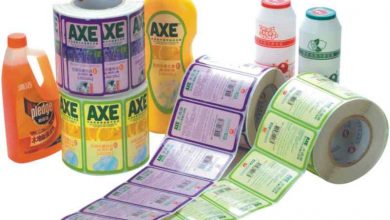Product launches: what you need to know
Few events in business are as exciting as a new product launch. Not only does the introduction of a new product stimulate potential growth, it can also serve to rally employees around a new venture and breathe new life in the workplace (and marketplace).
Conversely, a poorly engineered launch can damage future sales efforts, alienate an existing customer base, and wreak havoc on a brand.
To ensure a successful product launch and boost brand awareness in the process, keep these tips in mind, according to Claire Prendergast, director of marketing communications at agencyEA, a brand experience agency specializing in experiential, digital and traditional engagement in Chicago.
Pinpoint goals and alignment with your broader strategies
It’s critically important that any new product fit in with a company’s larger strategic objectives — be they greater brand awareness, expansion of a customer base or an increase in market share. “A product is useless if it doesn’t align with the company’s trajectory,” notes Justin Gibson, president of the gourmet food-and-wine franchise Vom Fass USA.
A competitive analysis should be another obligatory process. Is there any value in entering a market where a competitor has already established a significant presence? On the other hand, such an analysis can uncover significant “product gaps” in a competitor’s offerings that you can exploit.
Know the potential audience for your new product
This is particularly important if the potential audience differs from your current customer base. You need to fully understand their demographic profile, the reasons they might want or need your product, the media and online channels by which they gain information, and so on.
Need is probably the most crucial element — if your new product doesn’t address a customer’s pain point, is it really worth all the time, effort and expense a successful product launch requires?
Begin work on a targeted marketing plan
Don’t wait until the new product is ready to launch before embarking on a marketing plan to support it. With an eye to reaching key influencers, start spreading the word about your exciting new product a full six to eight weeks before the proposed launch date. Share news on social media channels and industry blogs popular with these influencers (and your target audience) and create pre-launch press releases that get people excited about what’s ahead.
Positioning the new product in advance sets the framework for how customers will perceive and evaluate it after the launch. Such information is a key factor in determining their decision to buy.
Aim for MVP (Minimum Viable Product)
There’s really no such thing as a perfect new product. Testing of key features and applications should take place well before launching, with the idea of incorporating further refinements at a later date. The goal is delivery of a Minimum Viable Product to early adopters and other users, in order to generate buzz and to begin collecting invaluable feedback for further refinements.
“Avoid potential distractions by focusing on what your product needs to have, rather than what your product could have,” writes marketing expert Sonny Ganguly, “and accept up front that product will not be perfect at launch.”
Conduct regular checkups prior to launch
As part of your planning, establish metrics to assess the ongoing progress of the new product development. Depending on the complexity of the initiative, schedule regular checkups (daily, weekly, monthly) to monitor the outcomes thus far and to make sure development is still aligned with your original objectives.
These checkups should also ensure that various team members are maintaining clear and detailed communications.
Test, test, test
When the time is right, testing of the new product should begin. The goal is having a small group of loyal customers and brand advocates take the new product for a “spin,” identifying what works and what needs improvement. Testing options include:
• Focus groups
• Beta program testing
• A/B testing
• Multivariate testing
One round of testing is rarely sufficient. By its very nature, testing is an iterative process, resulting in a compilation of data that not only improves the product itself but influences howit will eventually be marketed. Be prepared to act upon the feedback of your end users; satisfying their needs and concerns is your top priority.




